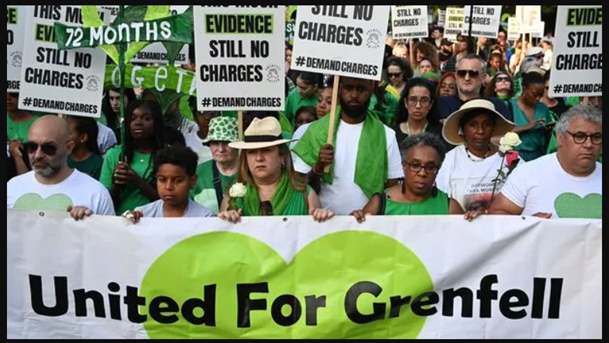Grenfell Tower inquiry unveils critical findings: What the Phase 2 report reveals
On 4 September 2024, the Grenfell Tower Inquiry released its highly anticipated final report, marking a pivotal development in the aftermath of the catastrophic fire at Grenfell Tower on 14 June 2017. This report represents the culmination of an exhaustive investigation into the circumstances surrounding the disaster, which claimed the lives of 72 people and affected many more.
The Phase 2 report provides a comprehensive analysis of the various factors that contributed to the fire’s devastating impact. It scrutinises the actions and decisions of individuals, organisations and authorities involved before, during and after the blaze. The report identifies significant lapses in safety protocols, deficiencies in building regulations and shortcomings in emergency responses. It also highlights systemic issues and failures that exacerbated the tragedy.
Among its key findings, the report underscores the need for substantial reforms to prevent a recurrence of such an incident. It critiques the inadequate safety measures in place and the lack of proper oversight and enforcement of building standards. Additionally, it calls for improvements in emergency response procedures and accountability mechanisms.
The key findings of the Phase 2 Report are as follows:
- Longstanding warnings ignored: The report reveals that warnings about the dangers of flammable cladding were issued as early as 1992. Despite subsequent incidents and calls for regulatory changes, flammable cladding continued to be used due to regulatory inadequacies.
- Confidential fire test results: In 2001, fire tests showed that the cladding burned violently, yet the results were kept confidential and no regulations were updated to address the risk.
- Government inaction: The 2010 coalition government, focused on reducing regulations, ignored risks related to building safety. The inquiry criticises the government’s approach, which prioritised deregulation over safety.
- Privatisation issues: The privatisation of the Building Research Establishment (BRE) in 1997 led to exposure to unscrupulous product manufacturers, further compromising safety standards.
- Deliberate concealment of dangers: The inquiry found that Arconic, the cladding manufacturer, deliberately concealed the dangers of its product. Similarly, insulation manufacturers Celotex and Kingspan made misleading claims about their products.
- Council and contractor failures: The Royal Borough of Kensington and Chelsea’s management of the Grenfell Tower refit was marked by poor oversight and indifference to fire safety. Contractors involved failed to meet their safety obligations.
- Inadequate fire brigade preparation: The London Fire Brigade was found to be unprepared for the scale of the Grenfell fire. Senior officers lacked the necessary skills and knowledge to manage the situation effectively and there were failures in training and planning.
- Systemic issues: The report concludes that the Grenfell Tower disaster was the result of decades of systemic failure in building safety management. It calls for significant reforms, including the establishment of a single regulatory body accountable to a government minister.
In response to the report, the Government has committed to a detailed and thoughtful review of its recommendations. This commitment reflects the gravity of the findings and the determination to address the issues raised. The Government’s review aims to implement the necessary changes to enhance fire safety and housing standards, ensuring that the failings exposed by the Grenfell fire are comprehensively addressed. The report’s recommendations are expected to drive significant policy changes and regulatory reforms, marking a crucial step towards safeguarding lives and preventing future tragedies of this nature.

For more information on the Phase 2 Report of the Grenfell Tower Inquiry, please visit the link below:
https://www.gov.uk/government/publications/publication-of-the-grenfell-tower-inquiry-phase-2-report
